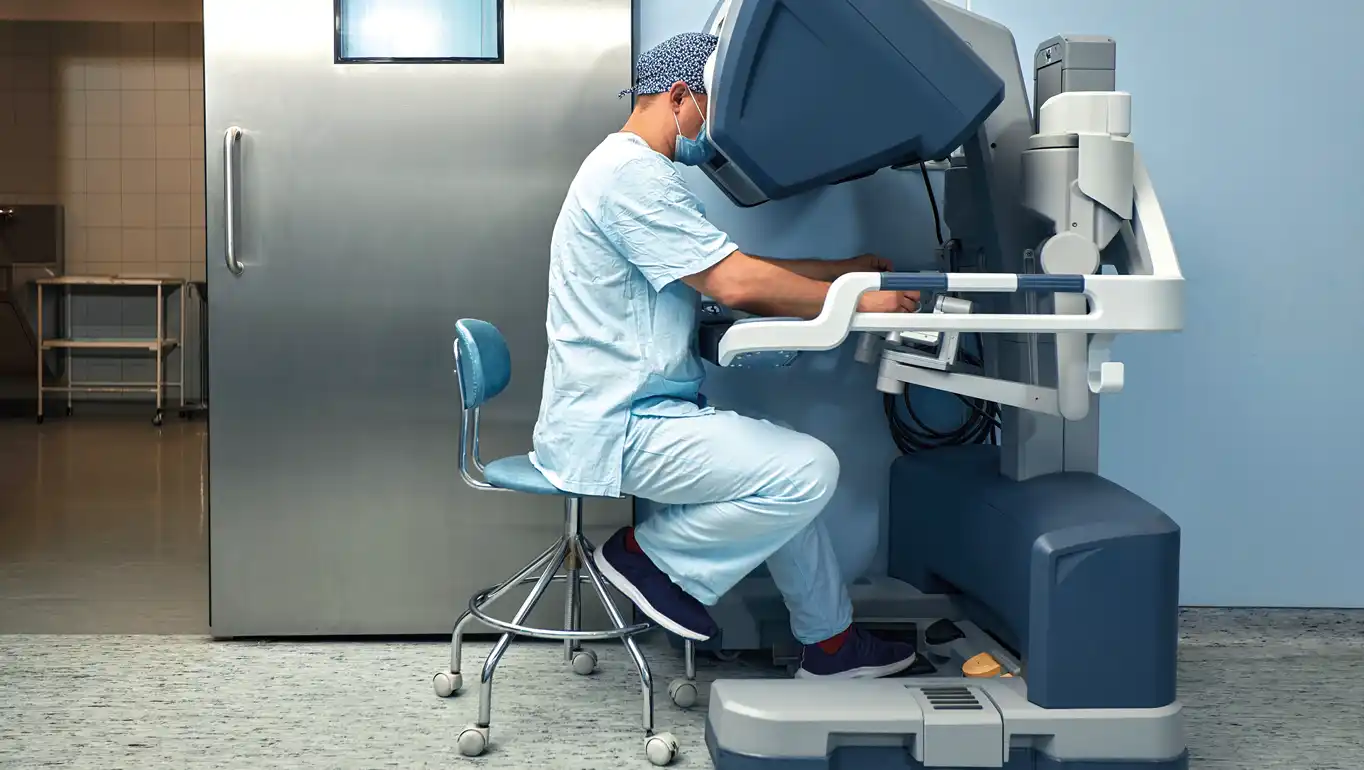Thirty to forty years ago, the advent of laparoscopic (keyhole) surgery revolutionized the medical field. Major operations could now be performed through small incisions, resulting in less pain, faster recovery, and a lower risk of complications. The procedure was visualized on a screen, allowing the entire surgical team to observe, making it an excellent tool for both teaching and learning. Common procedures such as appendectomies, gallbladder removals, ovarian cyst excisions, treatment of tubal pregnancies, and freeing intestines from adhesions became outpatient surgeries, with many patients going home the same day.
As confidence grew, surgeons began performing increasingly complex laparoscopic procedures, including full organ removal. Faster recovery times and reports of patients returning to work within a week helped establish laparoscopy as the preferred surgical approach. However, mastering laparoscopic surgery involved a steep learning curve, often requiring dozens or even hundreds of procedures for proficiency.
The introduction of robotic-assisted surgery marked the next significant advancement. Approved in the U.S. in 2000 for both adult and pediatric procedures—including urologic, general, thoracic, and even open-heart surgeries—robotic systems have since gained global recognition for their precision and minimally invasive nature. While several systems are in use, the most widely adopted is the da Vinci Surgical System by Intuitive, which received FDA approval for gynecological procedures in the U.S. in 2005.
The da Vinci system includes:
• A surgeon’s console, typically located in the operating room but capable of remote operation—even across continents.
• A bedside cart with four interactive robotic arms controlled from the console. These arms hold surgical instruments—scalpels, scissors, cautery devices, and graspers—and a high-definition 3D camera, which provides the depth perception lacking in traditional laparoscopy.
Despite its technological sophistication, the da Vinci system always requires a human operator.
Over time, surgeons have become proficient in complex procedures such as lung resections, heart surgeries, and colon cancer operations. As their skills improved, recovery times shortened—patients are now often discharged just hours after surgery. Pain management has also advanced, with long-acting local anesthetics reducing or eliminating the need for narcotics. The use of subdermal steroids in patients with darker skin tones also helps prevent keloid scarring.
Today, skilled robotic surgeons can perform a wide range of advanced procedures, including lung resections, heart surgeries, hernia repairs, and the removal of the gallbladder, pancreas, small intestine, and colon. What once required days or weeks of recovery can now be addressed with outpatient procedures, with some patients resuming normal activities the very next day. While not all surgeries are suitable for robotic techniques, by 2023, 25% of benign gynecologic surgeries and nearly 65% of gynecologic cancer surgeries were performed robotically.
Robotic technology has made significant contributions to women’s health:
• Ovarian cysts: Non-cancerous cysts, whether fluid-filled or hemorrhagic, typically resolve on their own unless they exceed 8cm. Larger cysts risk torsion, a surgical emergency that may require ovary removal—especially if care is delayed at night or in rural areas.
• Fallopian tubes: Robotic precision now allows for advanced procedures such as reconnecting tubal ends after ligation, offering fertility preservation.
• Uterine fibroids: These can be removed robotically, especially in women planning pregnancy or with a history of miscarriage due to fibroids. Patients should be counseled that future deliveries will likely require Cesarean section.
• Hysterectomies: Most are now performed robotically, though large uterine size may necessitate alternative approaches.
• Endometriosis: Once a surgical challenge, endometriosis is now more manageable. Severe cases—where pelvic tissues are fused together—require delicate dissection by a multidisciplinary team including gynecologic, colorectal, urological, and sometimes thoracic surgeons.
• Urogynecology: Robotic surgery has improved outcomes in managing urinary incontinence and pelvic organ prolapse, restoring quality of life for women once isolated by their symptoms.
• Gynecologic cancers: Robotic surgery enables minimally invasive removal of cancerous tissues and lymph node sampling, replacing the need for large incisions. Still, eligibility for robotic surgery depends on cancer type and stage.
As robotic technology continues to evolve, future systems will likely offer even more capabilities, reducing postoperative restrictions and accelerating recovery. With wider adoption, particularly in developing countries, the hope is that costs will become more accessible—bringing the benefits of robotic surgery to broader populations.



